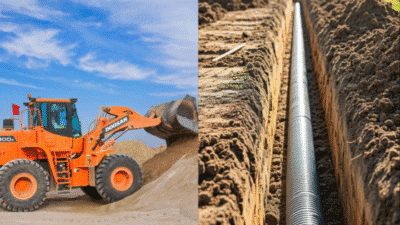Wood has long been celebrated for its natural beauty and versatility, making it a staple in construction and design. But with growing environmental concerns and increasing safety standards, it’s time to rethink how we use wood. Traditional wood harvesting and untreated lumber can contribute to deforestation, fire risks, and material waste. Today, smarter, safer, and more sustainable wood options are emerging, offering solutions that protect both the planet and your home. This shift invites us to explore responsible sourcing, innovative materials, and new technologies that make wood a forward-thinking choice for the future.

Rethinking Wood Sourcing
As concerns about environmental impact grow, it’s crucial to reconsider where and how wood is sourced. Unsustainable logging contributes to deforestation, loss of biodiversity, and increased carbon emissions. To combat this, many turn to certified forests and alternative practices that prioritize regeneration and ecosystem health. Within this context, Specialist Wood Solutions, which focuses on responsibly harvested timber and the use of reclaimed materials, has gained importance. These approaches ensure that the wood supply chain is more transparent and less harmful to the environment. By choosing wood products aligned with these principles, consumers and builders can help protect forests while still benefiting from the natural qualities wood provides.
Innovative Alternatives


Beyond sustainable harvesting, the wood industry is evolving with smarter materials like engineered and reclaimed wood. Engineered wood, such as cross-laminated timber (CLT) and plywood, uses layers of wood bonded with adhesives, offering greater strength, stability, and efficiency in resource usage. These products often use wood by-products or fast-growing species, making them both cost-effective and environmentally friendly. Reclaimed wood, salvaged from old buildings, barns, or shipping pallets, reduces demand for virgin timber while adding unique character and history to each piece. By choosing these alternatives, builders and designers can reduce waste, enhance durability, and preserve natural resources, all without compromising on aesthetic quality.
Safety First
Traditional wood can pose significant safety risks, especially in areas prone to wildfires or high humidity. Wood is inherently flammable, and untreated lumber may harbor mold, pests, or decay over time. Modern treatments and engineered options address these concerns head-on. Fire-retardant coatings, pressure-treated wood, and composite materials offer increased resistance to ignition and weather damage, significantly improving the safety profile of wooden structures. Non-toxic, eco-friendly preservatives and sealants are becoming more widely available, replacing the harmful chemicals once standard in wood processing. Prioritizing safer wood products helps protect your home and health, making safety a central pillar in the smart wood movement.


Energy Efficiency and Performance
The right type of wood can also contribute to a building’s overall energy efficiency. Engineered wood products are structurally robust and offer better insulation properties compared to traditional lumber. This means homes built with smarter wood choices can retain heat in the winter and stay cool in the summer, reducing the need for artificial heating and cooling. Because engineered wood tends to be more uniform and stable, it results in less material waste and better-fitting components, minimizing energy loss through gaps or warping. Incorporating energy-efficient wood solutions supports sustainable construction goals while offering long-term savings on utility bills.
Carbon Storage and Lifecycle Benefits
One of wood’s most undervalued strengths is its ability to store carbon. Trees absorb carbon dioxide from the atmosphere, and that carbon remains sequestered in the wood throughout its lifecycle. How the wood is used, processed, and eventually discarded or recycled determines whether this benefit is maximized. Using long-lasting wood products, especially those made from fast-growing, renewable sources, extends the carbon storage period. Opting for finishes and adhesives with low volatile organic compounds (VOCs) can reduce the environmental footprint further. Thoughtful lifecycle planning turns wood from a carbon liability into a long-term asset for climate resilience.
The Rise of Smart Wood Technologies

Technology is transforming how we think about wood at every stage of its use. Smart sensors embedded in wooden beams can now monitor moisture, structural integrity, and even pest activity in real time, helping homeowners and contractors detect issues before they become costly problems. New digital fabrication methods like CNC routing and robotic assembly also allow for precise, waste-minimizing construction that maximizes material efficiency. Moreover, data-driven design tools can now model the environmental impacts of different wood choices, helping consumers and builders make informed decisions. These innovations are redefining wood not just as a static material, but as a dynamic, data-integrated solution for modern living.
Wood remains a powerful and beautiful material, but the way we use it must evolve to meet the challenges of today’s world. From sourcing and safety to sustainability and smart technologies, rethinking your wood choices can lead to more responsible, efficient, and forward-thinking outcomes. Whether you’re remodeling a kitchen, building a deck, or designing an entire home, choosing smart, safe, and sustainable wood options is a necessity. By embracing these innovations and practices, you can ensure that your projects support a healthier planet and a safer future for generations to come.
- 29shares
- Facebook0
- Pinterest29
- Twitter0



